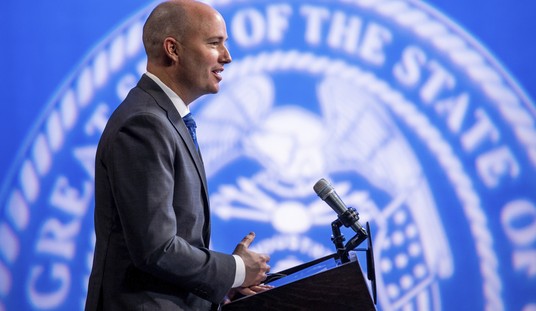The Supreme Court denied review of a case challenging the ATF’s ban on bump stocks Monday morning, leaving the rule that bans the continued possession of the items in place.
The case, known as Guedes v BATFE, hinged on whether or not the BATFE actually had the authority to retroactively ban bump stocks, which the agency had previously approved, or whether Congress needed to actually write a law banning the devices. As the Cato Institute noted last year, the D.C. Circuit Court of Appeals determined that the the agency was within its authority to enact the retroactive ban.
Instead of analyzing whether the administration was correct in determining that the term “machinegun” includes bump stocks, however, the court simply deferred to the administration’s interpretation. This was an example of the controversial doctrine of “Chevron deference,” in which courts defer to an administrative agency’s permissible interpretation of a statutory term if the term is ambiguous.
Because of Chevron deference, the law often means whatever the current administration decides it should mean. And while the Supreme Court has told lower courts not to apply the doctrine to criminal laws, there is a grey area for laws like this that have both criminal and civil sides. So, even after both the challengers of the law and the administration asked the court not to apply Chevron deference, the D.C. Circuit did it anyways.
According to Amy Howe of SCOTUSblog, Justice Neil Gorsuch addressed the Chevron deference argument in a statement.
#SCOTUS denies review in Guedes v. BATF, challenge to “bump-stock rule”; Gorsuch has statement indicating that Chevron “has nothing to say about the proper interpretation of the law before us,” but agreeing that this “interlocutory petition” does not merit review.
— Amy Howe (@AHoweBlogger) March 2, 2020
If you’re a non-lawyer like me, you probably had to look up the phrase “interlocutory petition” to find out exactly what Gorsuch meant. Gorsuch was arguing that the matter could still be reviewed in future cases even if the court decided not to hear this case, and in fact there are other challenges to the BAFTE’s bump stock ban still in the lower courts.
The 10th Circuit Court of Appeals is currently considering the case Aposhian v Barr, which raises similar questions and challenges to the BAFTE’s administrative action, and while the Supreme Court’s decision to pass on hearing a challenge to the bump stock ban probably doesn’t help the Aposhian case in the court of appeals, gun owners and those hoping to restore some limits to the rule-making authority of government agencies will get at least one more crack at SCOTUS once the 10th Circuit issues its decision.
The odds of the Supreme Court granting review to any one case are incredibly high, and the Court does have a number of Second Amendment-related cases in conference at the moment. We’re also waiting on the SCOTUS decision in New York State Rifle & Pistol Association v New York City. Oral arguments were held back in December in that case, and the attorneys and legal scholars that I’ve spoken to recently are hopeful that the Court will issue a substantive ruling in the coming months.
**UPDATE**
Here’s the text of Gorsuch’s statement, which does indeed indicate he thinks the issue of whether or not the BAFTE had the authority to ban bump stocks is still very much an open question. Read the whole thing, but here’s the most pertinent part of his statement.
The agency used to tell everyone that bump stocks don’t qualify as “machineguns.” Now it says the opposite. The law hasn’t changed, only an agency’s interpretation of it. And these days it sometimes seems agencies change their statutory interpretations almost as often as elections change administrations. How, in all this, can ordinary citizens be expected to keep up—required not only to conform their conduct to the fairest reading of the law they might expect from a neutral judge, but forced to guess whether the statute will be declared ambiguous; to guess again whether the agency’s initial interpretation of the law will be declared “reasonable”; and to guess again whether a later and opposing agency interpretation will also be held “reasonable”? And why should courts, charged with the independent and neutral interpretation of the laws Congress has enacted, defer to such bureaucratic pirouetting?
Despite these concerns, I agree with my colleagues that the interlocutory petition before us does not merit review. The errors apparent in this preliminary ruling might yet be corrected before final judgment. Further, other courts of appeals are actively considering challenges to the same regulation. Before deciding whether to weigh in, we would benefit from hearing their considered judgments—provided, of course, that they are not afflicted with the same problems. But waiting should not be mistaken for lack of concern.









Join the conversation as a VIP Member